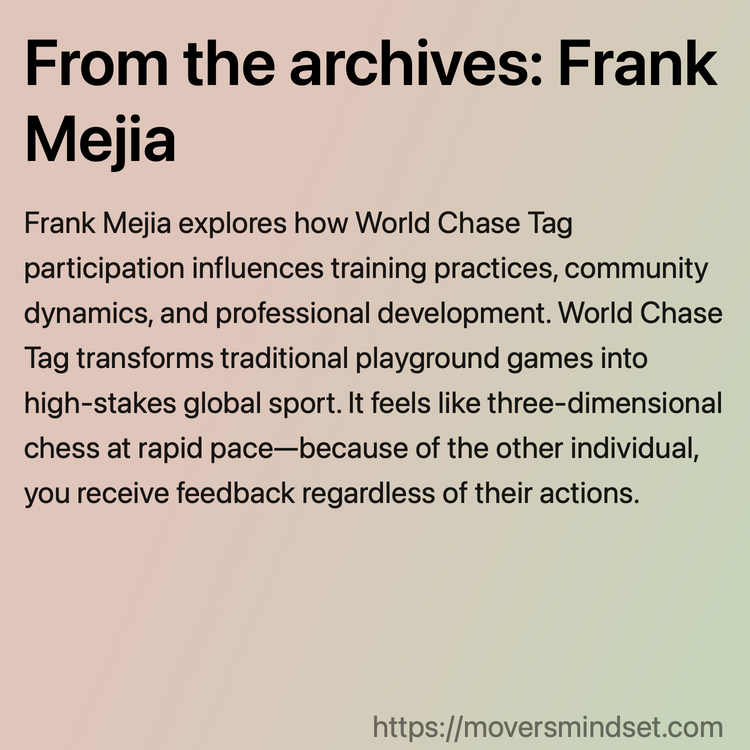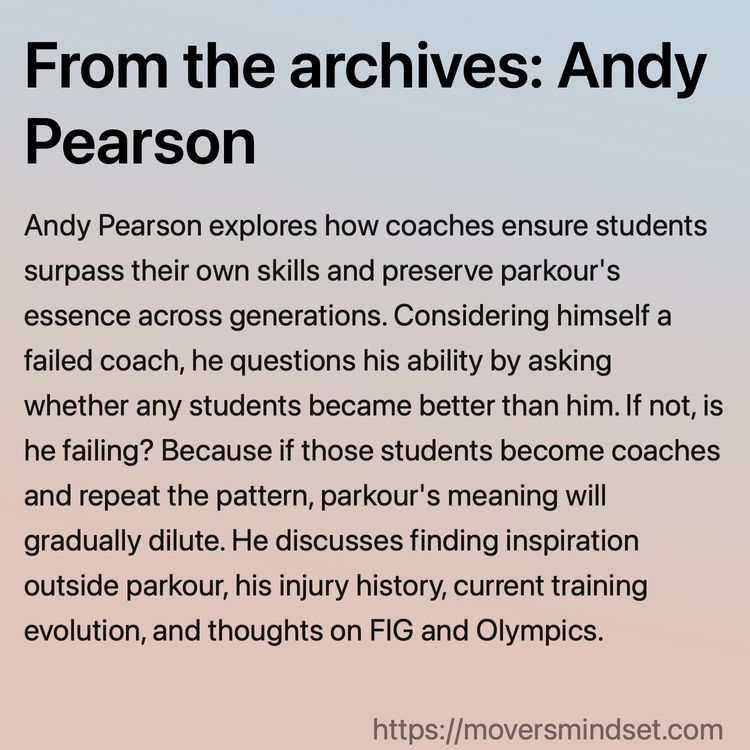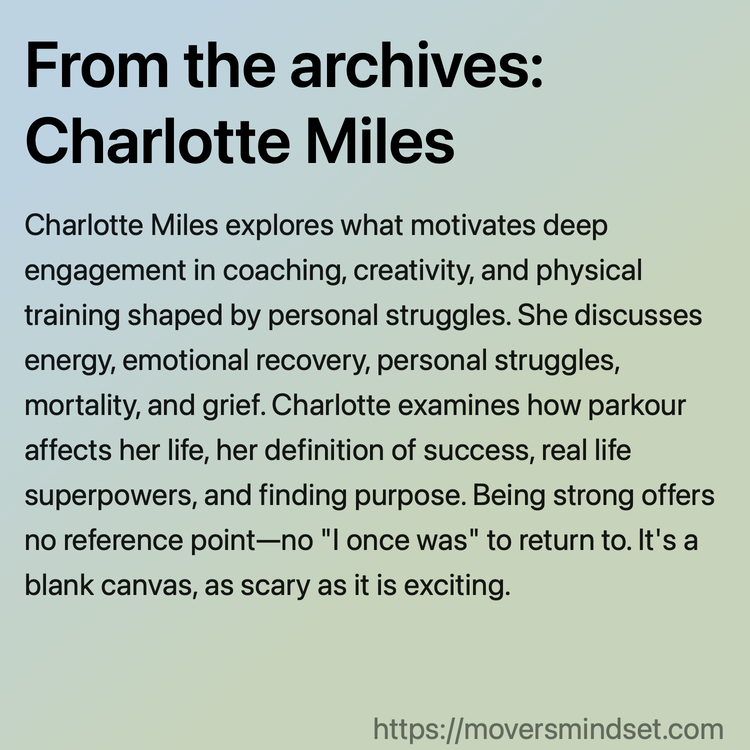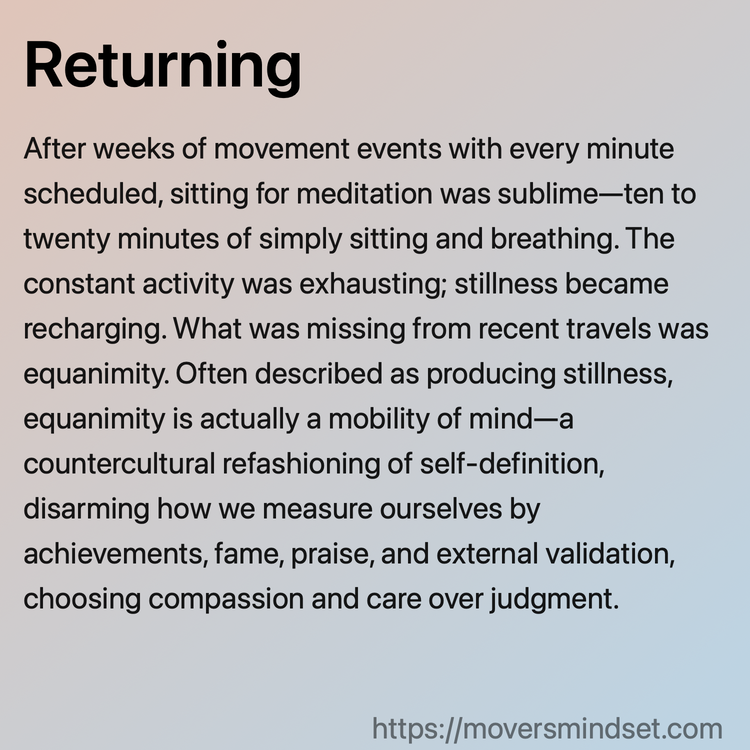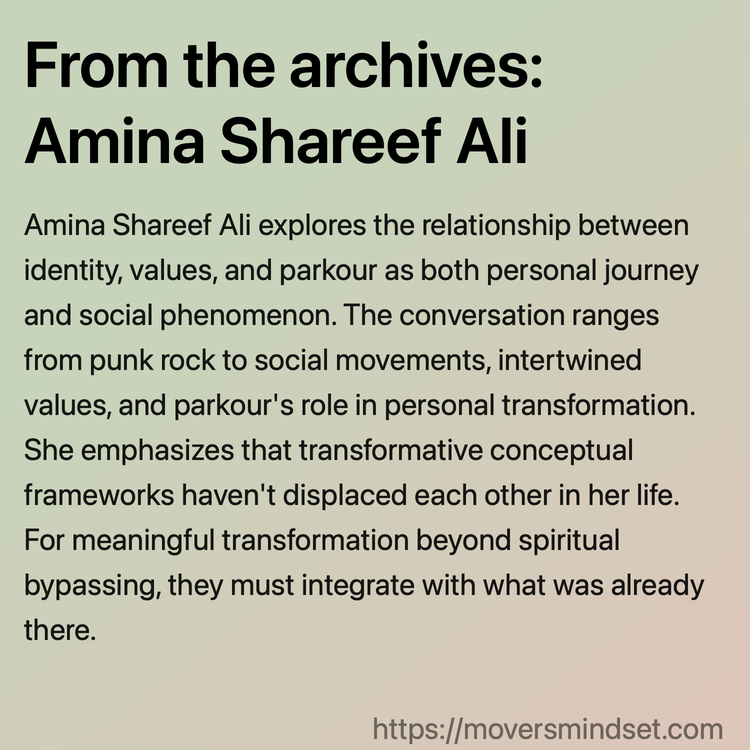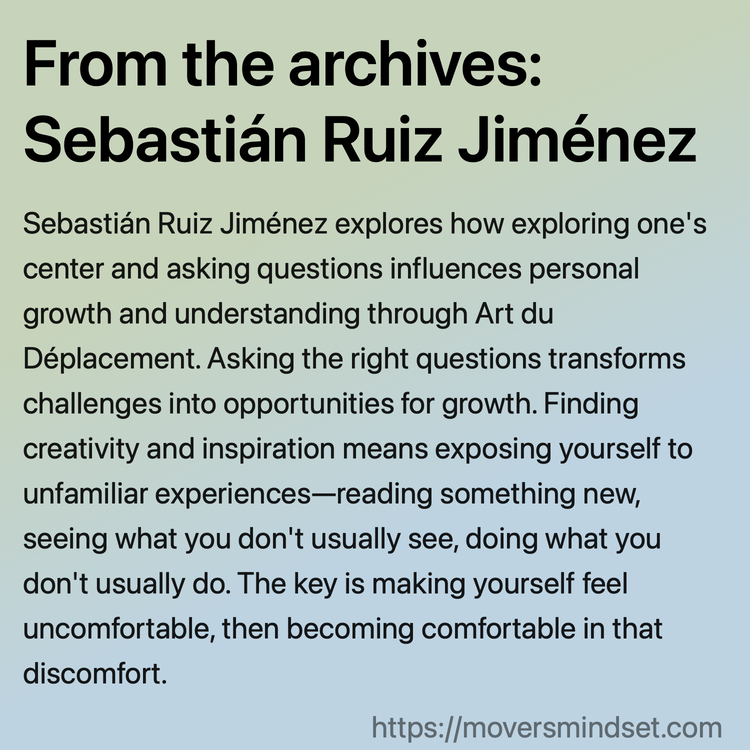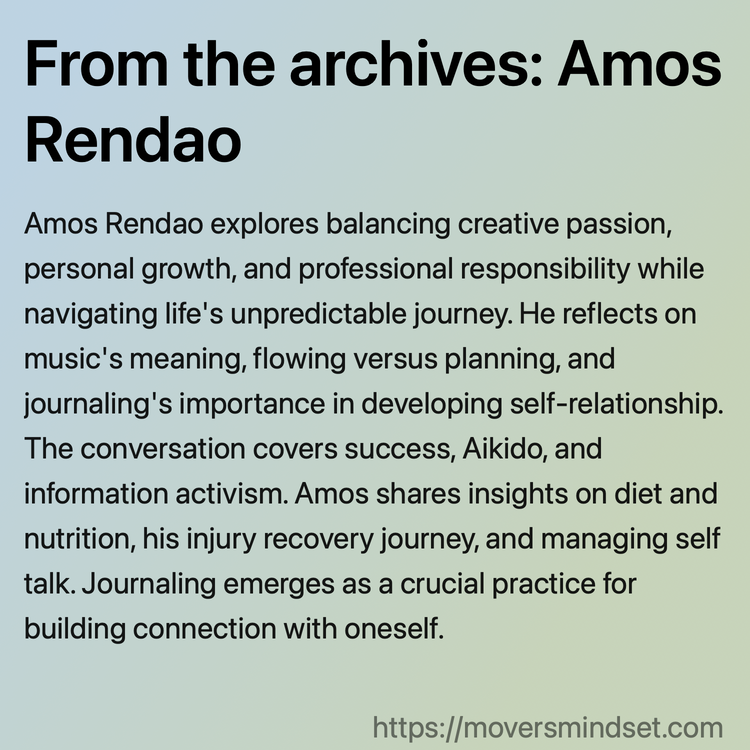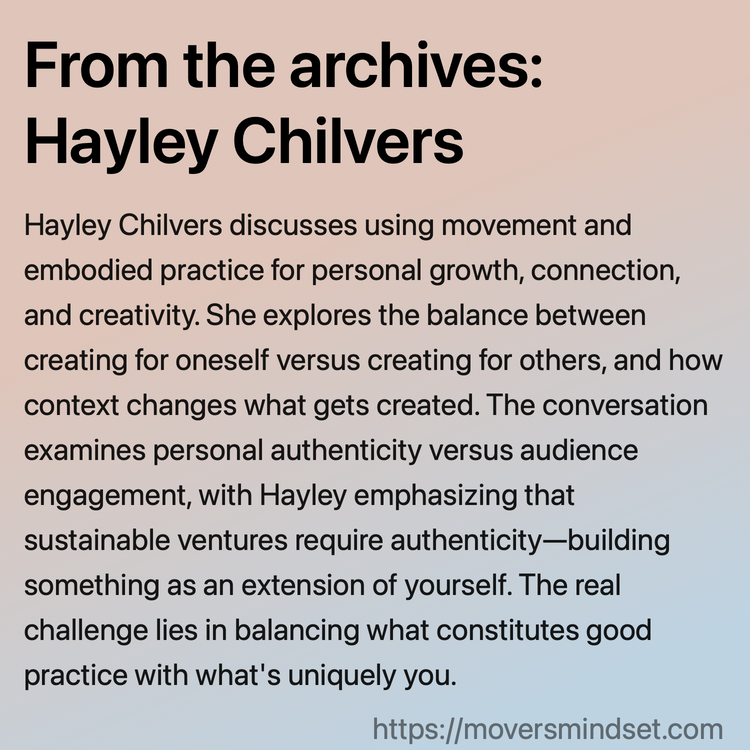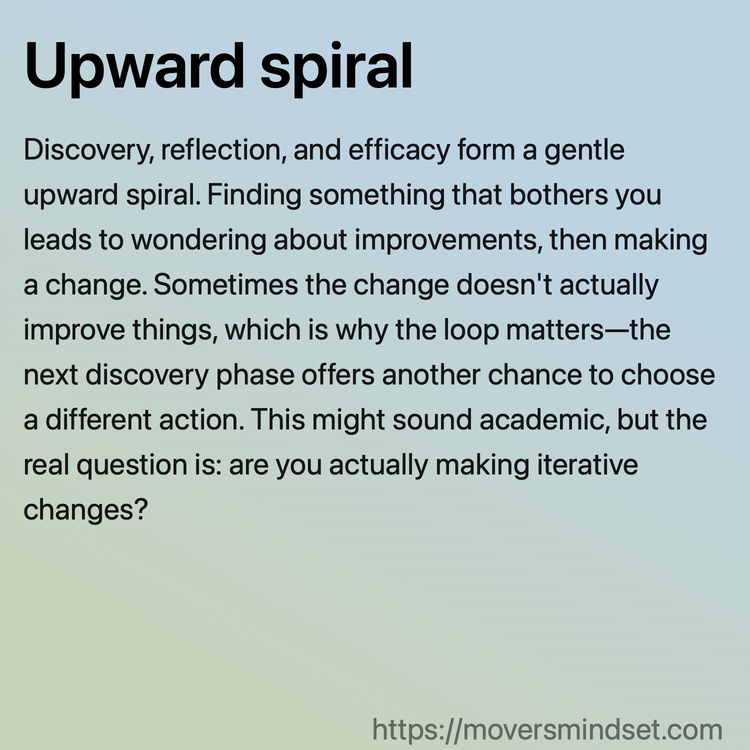Posts
From the archives: Frank Mejia
Frank Mejia explores how World Chase Tag participation influences training practices, community dynamics, and professional development. World Chase Tag transforms traditional playground games into high-stakes global sport. It feels like three-dimensional chess at rapid pace—because of the other individual, you receive feedback regardless of their actions. more →
From the archives: Andy Pearson
Andy Pearson explores how coaches ensure students surpass their own skills and preserve parkour’s essence across generations. Considering himself a failed coach, he questions his ability by asking whether any students became better than him. If not, is he failing? Because if those students become coaches and repeat the pattern, parkour’s meaning will gradually dilute.… more →
From the archives: Charlotte Miles
Charlotte Miles explores what motivates deep engagement in coaching, creativity, and physical training shaped by personal struggles. She discusses energy, emotional recovery, personal struggles, mortality, and grief. Charlotte examines how parkour affects her life, her definition of success, real life superpowers, and finding purpose. Being strong offers no reference point—no “I once was” to return… more →
From the archives: Kasturi Torchia
Kasturi Torchia explores integrating psychology and movement practices for mental wellbeing and personal growth. She describes her role with Parkour UK, her journey into mental wellbeing studies, and the Esprit Concrete method she developed. Her encounter with Parkour came at a crucial time when she needed something to jolt her into seeing things differently and… more →
From the archives: Damien Puddle
Damien Puddle explores how Parkour evolved into a subject of academic research and its broader cultural implications. Discovering a significant research gap, he became so interested in Parkour that he tried spinning every project toward it. There was hardly any research written about it at all, prompting his focus on the culture, practice, and academic… more →
Returning
After weeks of movement events with every minute scheduled, sitting for meditation was sublime—ten to twenty minutes of simply sitting and breathing. The constant activity was exhausting; stillness became recharging. What was missing from recent travels was equanimity. Often described as producing stillness, equanimity is actually a mobility of mind—a countercultural refashioning of self-definition, disarming… more →
From the archives: Amina Shareef Ali
Amina Shareef Ali explores the relationship between identity, values, and parkour as both personal journey and social phenomenon. The conversation ranges from punk rock to social movements, intertwined values, and parkour’s role in personal transformation. She emphasizes that transformative conceptual frameworks haven’t displaced each other in her life. For meaningful transformation beyond spiritual bypassing, they… more →
From the archives: Sebastián Ruiz Jiménez
Sebastián Ruiz Jiménez explores how exploring one’s center and asking questions influences personal growth and understanding through Art du Déplacement. Asking the right questions transforms challenges into opportunities for growth. Finding creativity and inspiration means exposing yourself to unfamiliar experiences—reading something new, seeing what you don’t usually see, doing what you don’t usually do. The… more →
From the archives: Amos Rendao
Amos Rendao explores balancing creative passion, personal growth, and professional responsibility while navigating life’s unpredictable journey. He reflects on music’s meaning, flowing versus planning, and journaling’s importance in developing self-relationship. The conversation covers success, Aikido, and information activism. Amos shares insights on diet and nutrition, his injury recovery journey, and managing self talk. Journaling emerges… more →
From the archives: Hayley Chilvers
Hayley Chilvers discusses using movement and embodied practice for personal growth, connection, and creativity. She explores the balance between creating for oneself versus creating for others, and how context changes what gets created. The conversation examines personal authenticity versus audience engagement, with Hayley emphasizing that sustainable ventures require authenticity—building something as an extension of yourself.… more →
Upward spiral
Discovery, reflection, and efficacy form a gentle upward spiral. Finding something that bothers you leads to wondering about improvements, then making a change. Sometimes the change doesn’t actually improve things, which is why the loop matters—the next discovery phase offers another chance to choose a different action. This might sound academic, but the real question… more →
From the archives: Frank Mejia
Frank Mejia discusses transforming parkour passion into a coaching career, exploring PK Move, Urban Evolution, and World Chase Tag. He reflects on becoming a coach, the game’s intricacies, travel’s role in his journey, and competition. Teaching, he notes, is a privilege—bringing people up and showing them what they didn’t think they could do. more →
